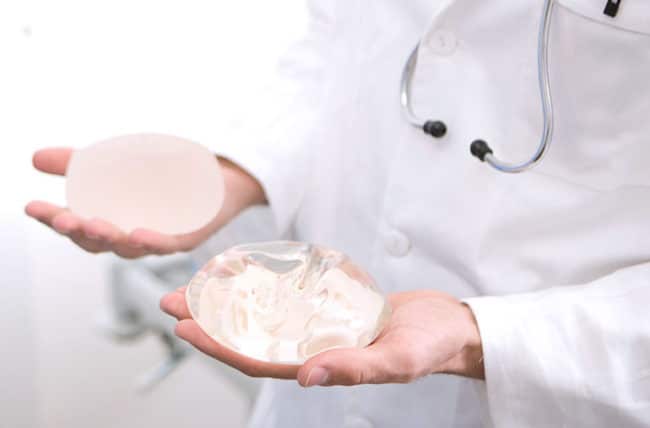The Nose Job Recovery Timeline – What to Expect
Nose job surgery, also known as rhinoplasty, is a surgical procedure used to reshape the nose. It can be done to improve the appearance of the nose, correct breathing problems caused by structural issues, or both. The surgery can also be used to reduce or increase the size of your nose, remove a hump, change the shape of the tip or bridge, narrow nostril width, and alter angle between your nose and upper lip.
The procedure is performed under general anesthesia and usually takes one to two hours. During the surgery, incisions are made either inside your nostrils or along the columella (the area between your nostrils). Your surgeon will then sculpt and reshape the underlying bone and cartilage structure of your nose. In some cases, tissue grafts may be needed for additional support. After reshaping your nose to its desired form, your surgeon will close the incisions with sutures.
Recovery from rhinoplasty varies from person to person depending on their individual healing process. Generally speaking, most patients take about two weeks off work for recovery before resuming normal activities. Swelling and bruising around the eyes may last for several weeks after surgery; however this should gradually subside over time.
Overall, rhinoplasty is a safe and effective procedure that can help you achieve a more balanced facial appearance while improving any breathing issues you may have due to structural problems in your nose. With proper care during recovery, you should be able to enjoy long-term results from this procedure.
Recovery Suite and Post-Surgery Care
After nose job surgery, patients will typically be taken to a recovery suite where they can rest and recover in a comfortable environment. The recovery suite is staffed by medical professionals who can monitor the patient’s condition and provide any necessary pain management.
Pain Management
Patients may experience some discomfort or pain during the first few days after nose job surgery. This is normal and can be managed with over-the-counter medications such as ibuprofen or acetaminophen, as well as prescription pain medications if needed. It is important to take all medications as prescribed by your doctor.
Avoiding Strenuous Activity
It is important to avoid any strenuous activity for at least two weeks following nose job surgery. This includes lifting heavy objects, engaging in vigorous exercise, or participating in contact sports. Doing so could cause further damage to the surgical site and delay healing.
Blowing Your Nose
It is also important to avoid blowing your nose for at least two weeks after the procedure. Blowing your nose could disrupt the healing process and cause additional swelling or bleeding at the surgical site. If you must blow your nose, do it gently and only when absolutely necessary.
Patients recover in a recovery suite; pain managed with medications; avoid strenuous activity and blowing nose for two weeks.
Sutures and Splint Removal
Nose job surgery is a delicate procedure that requires careful post-surgery care to ensure the best possible outcome. One of the most important steps in the recovery process is removing sutures and splints. Depending on the type of nose job performed, these may be removed anywhere from five to ten days after surgery.
Removing Sutures
Your surgeon will use dissolvable sutures, so they do not need to be removed manually. Instead, your body will naturally absorb them over time, usually within seven to ten days after surgery. If any sutures remain after this time period, your surgeon can remove them during a follow-up appointment.
Removing Splints
Splints are typically placed inside your nostrils and outside your nose for support during healing. These are made from tape or plastic and should be removed around five days after surgery. To remove them, simply take off the outer bandage and gently pull out the splint with clean hands.
It is important to note that you should never attempt to remove sutures or splints yourself as doing so could cause serious damage to your nose and disrupt the healing process. It is best to wait until your surgeon has given you clearance before attempting removal on your own.
Sutures and splints should be removed five to ten days post-surgery, as advised by a surgeon.
Returning to Normal Activities
When it comes to returning to normal activities after a nose job, it’s important to follow your doctor’s instructions and take things slow. Depending on the type of procedure you had, you may be able to return to work or school within a few days or weeks, but you will likely need to wait several weeks before resuming more strenuous activities.
Light Exercise
Your doctor will likely advise you not to engage in any strenuous activity for at least two weeks following your surgery. This includes exercise, such as running, swimming, or weightlifting. However, light exercise such as walking is usually safe after about one week post-surgery. Make sure that you are taking your pain medications as prescribed and avoid any activity that causes pain or discomfort.
Socializing
You should also avoid socializing for at least two weeks following the surgery. This includes attending parties and other social gatherings where there is a risk of contact with others who could transmit infections. It is also important to avoid drinking alcohol during this time since it can interfere with the healing process and increase the risk of complications.
Driving
It is generally not recommended to drive for at least one week after your nose job surgery. You may feel fine enough to drive earlier than this, but it is important that you wait until your doctor gives the okay before getting behind the wheel. Driving too soon increases the risk of an accident due to decreased reaction times caused by pain medication use or dizziness from swelling in the face area.
In general, it is best to take it slow when returning to normal activities after a nose job surgery. Listen carefully and follow your doctor’s instructions in order to ensure that you have a safe and successful recovery.
Conclusion
nose job surgery is a common procedure that can help people feel more confident in their appearance. It is important to understand the risks associated with the procedure and to follow your doctor’s instructions for recovery and post-surgery care. Pain management, avoiding strenuous activity, and blowing your nose carefully are all important parts of recovery. Sutures and splints should be removed as instructed by your doctor, and then you can begin to return to normal activities such as exercising, swimming, and using makeup.
Overall, nose job surgery is a safe procedure when done correctly. Your doctor will provide you with detailed instructions for recovery and post-surgery care. Following these instructions will ensure a smooth recovery process with minimal complications. With proper care, you can look forward to having a beautiful new nose that fits your face perfectly.






